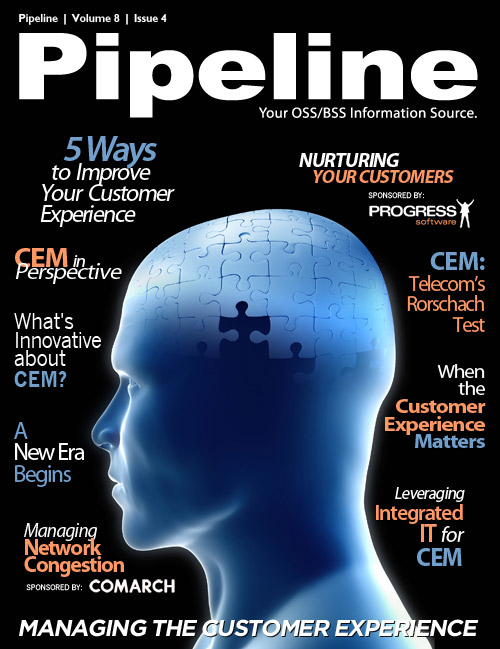Aside from the need to unify data from disparate domains, there are new market dynamics driving innovations in CEM. Yossi Zohar, director for Customer Management at Amdocs, assembled a list of the most important trends in the market and how they relate to CEM:
- Device Proliferation: The dramatic increase in the introduction and adoption of new connected devices (smart phones, tablets, telematics, mobile health, etc.), resulting in three or four connected devices per subscriber. As more complex smart devices hit mass markets, service providers’ sales and support representatives will need better knowledge and tools to scale up to provide efficient and effective service for all these products.
- Diversification of Sales Channels: The number of different channels that will sell and support the connected products is exploding (e.g., consumer electronics retailers, car dealerships, pharmacies). This will put customer experience in the hands of external (3rd party) representatives. The key challenge for service providers will be maintaining brand loyalty without having direct control of the customer interaction.
- Application Explosion: The dramatic increase in the number of applications offered, some of which posing “over the top” competition with the service providers’ “bread and butter” (e.g., Netflix threat on “On Demand” Pay TV, Viber’s threat on mobile voice with free phone calls and SMS messages over a data connection). Service providers will need to work hard to find a way to cope with this reality and differentiate their service to maintain the customer experience vs. becoming a “dumb pipe”.
- Social Media Interaction: The exponential adoption of social media as an interaction channel. Service providers will need to find a more scalable and automated way to leverage social media to better sell and support their customers. Today, most service providers are still handling this emerging channel in a sub-optimal and manual manner that cannot scale and therefore they are exposed to the negative influence that social media brings with it.
Properly envisioned, CEM touches virtually every element in the network, from ordering and provisioning, to service delivery, quality and billing. Addressing and attempting to define and manage the experience from just one of these touchpoints misses the bigger picture. (This is important to note, because as we uncover the innovations that are a part of a migration to a experience-focused culture, we are not advocating specific components, but merely highlighting the types of innovation that enable CEM culture transformations).
Multi-Layer Unification
Analytics that are filtered through the five domains at a typical carriers are like the five microscopes focused on disparate elements of a unified body. Each one can reveal a piece of the puzzle, but alone, none advocate a holistic view of the customer experience. Sanjay Mewada listed the layers that a CEM transformation unifies: “One good way to look at CEM is that it now pulls together these domains: CRM, BSS/Billing, SA, Analytics, and OSS. In the past these domains have lived in isolation.”
The problem, of course, is how to do it. As Jeff Parker, CEO, Monolith explains, “One of the biggest things in the industry today is that carriers want the ability to monitor across the entire cellular infrastructure. The problem is most are operating with disparate classes of tools accumulated through merger and acquisition activity.”
There is ample room for debate over the best methodology for delivering multi-layer unification, but one tactic is to collect data from existing systems to create higher-value KPIs. This is known as meta-metrics (think meta-analysis). Another option is to re-engineer the core architectures, to achieve on a common platform with open APIs. Regardless of the process, every innovative CEM implementation requires multi-layer unification.
Multi-Channel Customer Interaction
The customer of today interacts with a carrier through many channels: a web portal, a kiosk, a handheld device, a third-party retailer, an ATM machine, a net-enabled television, social media, and the expensive call center. Innovative CEM values each touchpoint equally, and is capable of collecting, managing, analyzing, and leveraging data from every interaction. In this manner, unique users can experience greater personalization. For instance, if I use a Spanish-language browser to review my billing statement, my top-up text message should default to Spanish. If there is a service outage in my area and I have an active Twitter account, I should receive a tweet informing me of the problem.
Neil Lilley, Director of Marketing, Operations Solutions, Telcordia Technologies, echoed the need for personalization. “The most innovative approaches to CEM employ advanced, integrated monitoring techniques that enable understanding of the customer experience and customer behavior at the individual customer and device level.”
A customer who must indicate a language preference at the beginning of every interaction won't feel unique. Likewise, the network should be aware of the devices a customer owns and the preferred method(s) of interaction for each customer.













